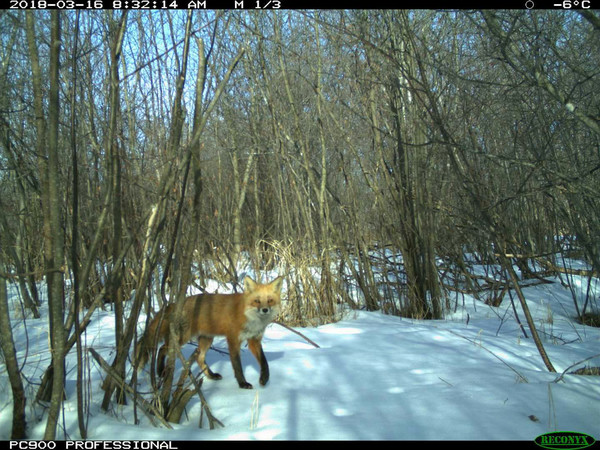
Cedar Creek: Eyes on the Wild
Understand wildlife dynamics in Minnesota
- Ongoing
More Information
Cedar Creek Ecosystem Science Reserve is a world-famous biological field station located in the midwestern USA (Minnesota). This reserve is within the meeting point of the three largest biomes of North America - tallgrass prairie, eastern deciduous forest and boreal coniferous forest - and is consequentially filled with a diverse array of floristic and faunal diversity.
World-renowned scientists have made Cedar Creek their workplace from the beginning: the modern science of ecosystem ecology was conceived here in the 1940s. From the earliest work at Cedar Creek to the most modern experiments today, research has focused on ecology and the services ecosystems provide to the planet and to human society.
Now, researchers at Cedar Creek are turning their attention to the wildlife. For decades, scientists have rigorously monitored, manipulated, and experimented with the incredible plant diversity within Cedar Creek’s grassland and forest ecosystems: carbon has been measured, nitrogen fluxes quantified, seedlings meticulously counted. From this incredible body of work, we have discovered some amazing things about the functioning of the natural world. But - what about the animals?
In addition to being home to dozens of long-term plant and soil biodiversity projects, Cedar Creek is also teeming with animal life. This diverse community of herbivores, predators, and meso-predators interact in complex ways that affect each other and the environment that they live in. Rodents are stealing seeds, deer are chowing down on grasses, and recently, wolves and bison are returning to this ecosystem after decades or centuries of absence. The contributions of these interactions to the structure and functioning of these ecosystems remain under-explored. To better understanding how these animals might affect these ecosystems, researchers have deployed a vast network of trail cameras across the Cedar Creek property. These cameras are triggered by motion and body heat to take pictures whenever wildlife pass in front of them, providing a peek into the “secret lives” of the animal community. Over a hundred cameras have been set up, capturing high resolution data on the movement and activity patterns of more than two dozen species, including wolves, foxes, coyotes, deer, turkeys, and more. Your assistance going through these images and identifying species, recording behavior, and sharing your observations helps our scientists to understand what’s happening on our landscape. These data are then combined with Cedar Creek’s already comprehensive collection of plant and soil data to study how predators structure ecological communities and ecosystems.
Ticket Required: No
Minimum Age: 13
Languages: English
